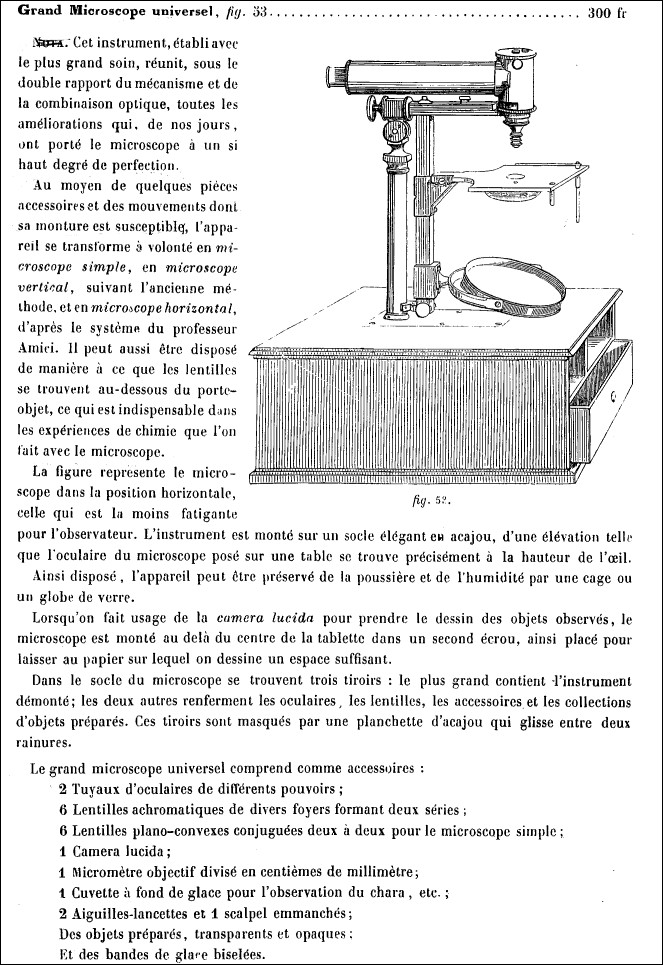
The following is the English translation:
This instrument, established with the greatest care, reunites, both as to the mechanism and the optical combination, all the improvements that, in our times, have brought the microscope to such a high degree of perfection.By means of some accessory parts and movements allowed by the stand, the apparatus transforms at will into a simple microscope, vertical microscope, following the old fashion, and into a horizontal microscope, after the model of professor Amici. It can also be set up in such a way that the lenses are beneath the object-holder, this is essential in chemical experiments done with the microscope.
The figure represents the microscope in the horizontal position, which is the least fatiguing to the observer. The instrument is mounted on an elegant mahogany base, of such a height that the ocular of the microscope [, when the microscope is] put on a table [,] is exactly at the height of the eye.
Set up this way, the apparatus can be preserved from the dust and the humidity by a cage or a glass globe.
When one makes use of the camera lucida for drawing the observed objects, the microscope is mounted beyond the centre of the small plank in a second nut, thus placed for leaving sufficient space for the paper on which one draws.
The base of the microscope has three drawers; the largest contains the dismantled microscope, the two other contain the oculars, the lenses, the accessories and the collections of prepared objects. These drawers are masked by a small mahogany plank that slides between two grooves.
The large universal microscope comprises as accessories:
2 Barrels of oculars [sic] of different magnifications;
6 Achromatic lenses of different focus points forming two series;
6 Plano-convex lenses combined two by two for the simple microscope;
1 Camera lucida;
1 Micrometer objective divided in hundredths of a millimetre;
1 Box with bottom of glass for the observation of the Chara, etc;
2 Needles and 1 scalpel with handles;
Prepared objects, transparent and opaque;
and bands of glass [sic] with edges formed by two oblique planes [glace biselées].
(I thank Jeroen Meeusen for this translation )